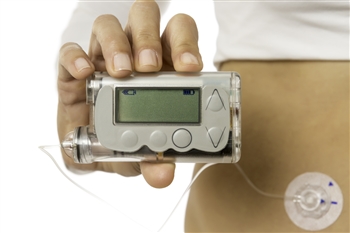 |
 |
For millions of diabetics, insulin pumps are literally lifesavers. Instead of having to give themselves injections multiple times a day, the pump is always connected and gives a steady flow of insulin (some insulin pumps also have the capability to continuously monitor blood sugar). These functions enable diabetics to better manage their health. And by replacing countless needles and glucose test strips, an insulin pump saves costs and reduces medical waste.
The pump design itself has several technical challenges for engineers. It must be extremely reliable. It must be small and portable. And it should have simple battery-changing requirements in order to be customer-friendly and easy to use.For millions of diabetics, insulin pumps are literally lifesavers. Instead of having to give themselves injections multiple times a day, the pump is always connected and gives a steady flow of insulin (some insulin pumps also have the capability to continuously monitor blood sugar). These functions enable diabetics to better manage their health. And by replacing countless needles and glucose test strips, an insulin pump saves costs and reduces medical waste.
These same system-level challenges are also true of the power-management circuitry. The rechargeable lithium batteries used in insulin pumps are proven to be reliable in countless portable devices. But how reliable is the battery gauge? Have you ever experienced large swings in remaining battery capacity (from 50% down to 25% in a few minutes, for example) when using your smartphone or notebook? Such swings, which may be the result of the injection motor turning on, are unacceptable for an insulin pump, where the wearer needs more warning that their insulin pump needs recharging.
The TI Design reference design for an energy storage circuit for uninterrupted power supply (PMP9771) solves this dilemma by providing a second portable power source for the pump: a single AA battery. The pump still operates from a rechargeable single-cell lithium battery, which can be recharged from the wall adapter as before, but also includes a simple and low-cost circuit to recharge the lithium battery from an AA battery in addition. Or to reduce the cost of the insulin pump even further, the battery charger IC can be removed altogether and the lithium battery recharged with just the AA battery. Figure 1 shows the tested circuit.
Figure 1. The built and tested PMP9771 energy storage circuit
In the PMP9771 reference design, the lithium battery always powers the insulin pump, storing energy and providing the higher peak currents that the AA battery cannot provide due to its internal impedance. As well, the pump remains powered even when the AA battery needs replacing. This is a key advantage over a pump powered from just the AA battery alone. The AA battery powers a TPS61220 boost converter, which boosts the ~1.2V battery voltage to around 4V for the lithium battery. A small resistor on the output safely limits the charging current, while the voltage loop on the TPS61220 limits the charging voltage to safe levels. The TPS61220 keeps charging the battery until it is fully charged to the regulation voltage. Then the boost converter enters power-save mode, drawing just microamps from the AA battery. As the lithium battery discharges, the boost converter automatically recharges it until the AA battery is completely depleted. For all the details, read the full test report.
The advantage of this technique is an increase in reliability – being able to recharge the insulin pump with widely available AA batteries. You don’t need an AC power plug or USB port to charge the pump. Plus, since the pump contains both a lithium battery and an AA battery, more energy is kept in the pump, which allows for even longer runtimes without battery changing. The small-outline transistor (SOT)-23 package of the TPS61220 boost converter supports a small and low-cost circuit, with only simple battery changing necessary.
What other devices would you like to recharge from an AA battery?


